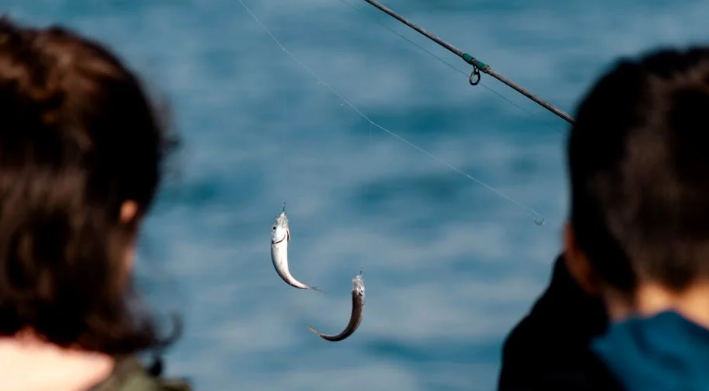When we think about seafood, we might imagine a plate full of colorful fish. Among these, the blue fish stand out with their striking colors. But are blue fish good to eat? This question is important, especially for those who love seafood or want to try something new. Let’s dive into the world of blue fish and find out more about their taste, nutrition, and how they are prepared.
What Are Blue Fish?

Blue fish include many types of fish that have a bluish tint to their scales or skin. Some of the most popular blue fish are:
- Bluefish: Known for their strong, aggressive behavior in the wild.
- Mackerel: Recognizable by their sleek bodies and vibrant blue-green color.
- Tuna: Though not always blue on the outside, they have a rich, dark blue flesh.
- Sardines: Small, shiny fish with a blue-green back.
- Anchovies: Tiny, silver-blue fish often found in large schools.
Each of these fish has its own unique flavor and use in cooking.
The Taste of Blue Fish
The taste of blue fish can vary a lot depending on the type of fish and how it is prepared. Generally, blue fish are known for having a strong, distinctive flavor. This is partly due to their high oil content. Here’s a closer look at how some of these fish taste:
- Bluefish: They have a rich, full flavor. Some people describe it as bold or even a bit fishy.
- Mackerel: Mackerel has a strong, rich taste. It is often described as a bit sweet and very flavorful.
- Tuna: Tuna is versatile. It can range from mild to very rich, depending on how it’s cooked and which part of the tuna you are eating.
- Sardines: These small fish pack a punch of flavor. They are oily and have a bold taste.
- Anchovies: Anchovies are famous for their salty, umami-rich taste. They are often used to add depth to dishes.
Some people love the intense flavors of blue fish, while others prefer milder tasting fish. It all comes down to personal preference.
Nutritional Benefits
Blue fish are not just tasty; they are also very nutritious. They are packed with healthy fats, vitamins, and minerals. Here’s why blue fish are good for you:
- Omega-3 Fatty Acids: Blue fish are rich in omega-3 fatty acids. These are good fats that help keep your heart healthy. They can lower blood pressure and reduce the risk of heart disease.
- High Protein: Fish is a great source of protein. Protein is important for building muscles and keeping your body strong.
- Vitamins and Minerals: Blue fish are full of essential vitamins like Vitamin D and B12. They also have important minerals like iodine and selenium that help your body function well.
Eating blue fish regularly can be a great addition to a healthy diet.
How to Cook Blue Fish
Cooking blue fish can be a lot of fun because there are so many ways to prepare them. Here are some popular methods:
- Grilling: Grilling gives blue fish a smoky flavor that pairs well with their strong taste. Bluefish and mackerel are especially good on the grill.
- Baking: Baking is a simple and healthy way to cook fish. You can bake tuna steaks or whole sardines with herbs and spices.
- Frying: Fried anchovies or mackerel are crispy and delicious. This method is popular in many cultures around the world.
- Smoking: Smoking adds a deep, rich flavor to blue fish. Smoked mackerel and smoked tuna are popular choices.
- Canning: Canned blue fish like sardines and anchovies are convenient and tasty. They can be used in salads, sandwiches, or as a topping for pizza.
Each method brings out different flavors and textures in the fish.
Sustainable Fishing and Blue Fish
It’s important to think about where our fish comes from. Overfishing can harm fish populations and the environment. Luckily, many blue fish are caught in ways that are good for the ocean. Here’s how we can enjoy blue fish responsibly:
- Choose Certified Fish: Look for fish that have been certified by organizations like the Marine Stewardship Council (MSC). This means they were caught in a sustainable way.
- Try Different Fish: Eating a variety of fish can help reduce the pressure on any one species. If everyone eats the same type of fish, it can lead to overfishing.
- Support Local Fishermen: Buying fish from local markets can help support small-scale fishermen who use sustainable practices.
By making smart choices, we can enjoy blue fish without harming the ocean.
Risks and Considerations
While blue fish are generally healthy, there are some things to be aware of:
- Mercury Levels: Some blue fish, like tuna, can have high levels of mercury. It’s best to eat these fish in moderation, especially for children and pregnant women.
- Allergies: Some people are allergic to fish. If you’re trying blue fish for the first time, start with a small amount to see how your body reacts.
- Storage and Freshness: Blue fish spoil faster than other fish because of their high oil content. Always buy them fresh and store them properly to avoid food poisoning.
By keeping these tips in mind, you can enjoy blue fish safely.
Conclusion
Blue fish are a delicious and nutritious choice for seafood lovers. Whether you prefer the bold flavor of bluefish, the rich taste of mackerel, or the convenience of canned sardines, there is a blue fish for everyone. They are packed with healthy fats, proteins, and vitamins that are good for your body. Plus, there are so many ways to cook them that you’ll never get bored.
When choosing blue fish, it’s important to think about sustainability and safety. By picking certified fish, supporting local fishermen, and eating a variety of seafood, we can enjoy these tasty fish while protecting our oceans.
So, next time you’re at the market, don’t be afraid to try something new. Blue fish might just become your new favorite meal!



